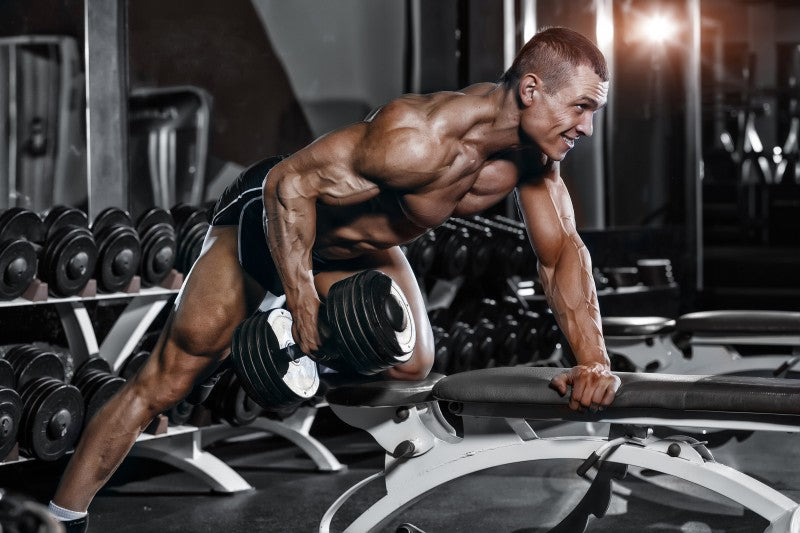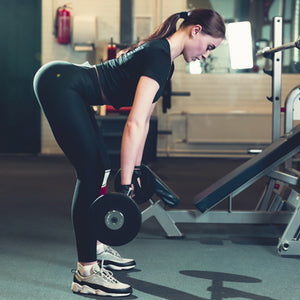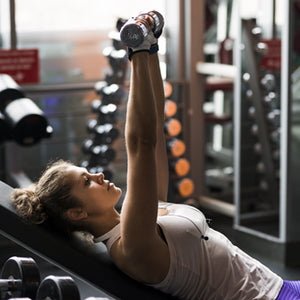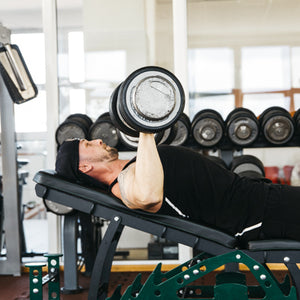
5 Hardcore Workout Rules That Are OK to Break
Have you found it yet? You know the training rulebook on how to effectively gain muscle mass? You haven't found it either? That's because there isn't one.
Sure, you can consider the latest interwebz article or manifesto as fact because it came from some online fitness guru that gave it away for free in exchange for your email address. But c'mon, do you really think there is a one-and-only universal textbook on how to train right?
Now, I will agree that there are a few principles that most, if not all, gym-goers should adhere to such as: Stay consistent, be progressive, and try to tune into and listen to your body's signals when it comes to pain, injury and development.
Related: How to Gain Muscle Mass Fast
There are some other tried and true beliefs that are so ingrained in lifters that I believe can actually hold back your progress. Here's something to mull over: As you progress in your training, get older and wiser and as your body changes physically you will need to shift gears and adopt other ways to stay mobile, healthy and add muscle and strength along the way.
Below are five common training "rules" you should break every now and again. This isn't a permanent rebellion against the establishment. It's simply a list to reference to when life throws you the old plateau pitch.
Breaking the Bodybuilding Rules
Rules # 1 - Always use free-weight barbell exercises for all body parts

Yes, the barbell. The traditional lifter's main weapon.
Touted as the ultimate tool for building major muscle mass and superhuman strength the barbell is a beautiful piece of equipment. Okay, maybe beautiful is the wrong word to use, but you can see the versatility of this age-old device.
Able to be used in almost any situation, the barbell enables you to load it with tons of weight and use most of the muscle and strength your body can muster. When someone utters the word "lift" thoughts of the long steel bar loaded with plates comes to mind.
Break the rule: Barbells are great for loading up the weight and perform big movements for a lot of muscle fiber recruitment. However, one big problem most gym-goers will face, whether they know it yet or not, is a strength imbalance.
When an individual moves from a barbell bench press, for example, to a dumbbell bench press their balance will be challenged. They will instantly feel wobbly and will fight to control the dumbbells. This forces you to work harder but will also limit the amount of weight used.
Why is this important? Strength imbalances can lead to injury and prevent you from applying the maximum amount of power and strength in barbell exercises. Be sure to add in some unilateral (single limb) exercises to your arsenal. Try dumbbell presses, single-leg squats, landmine presses, single-leg Romanian deadlifts and single-arm back moves.
Rule #2 - You must lift heavy in the low-rep ranges in order to build muscle
The old adage of "you must lift big to get big" is just one. Sure, you will need some sort of progressive overload to stimulate the muscle to change and grow bigger and/or stronger. You always see the latest pro bodybuilder lift heavy so you guess that must be the way to go, right?Well, yes and no.
More evidence is pointing to the progressive overload principle being more expansive than once was thought. Low reps of 4, 5 and 6 reps are great for strength. As everyone is built a bit differently these ranges can vary pretty drastically.
Break the rule: With so many other factors at play regarding what constitutes strength training versus power training versus hypertrophy (muscle size) training it's nearly impossible to prescribe a single rep range for every individual. Rest periods, volume of reps and sets, speed of reps (time under tension) and the overall pace of the workout all greatly influence your training results.
If you've lifted heavy in the low rep ranges with several minutes of complete rest in between each set for a significant amount of time it may benefit you to start upping your reps. Shoot for a range of 8 to 12 or 10 to 14 with one minute of rest between each set.
Increase your volume (sets) as well. You will feel you can't lift as much weight for each set at first but if you are training for hypertrophy, then your goal should be to fatigue the muscle not lift as much weight as you can for a new PR.

Rule #3 - Do fewer isolation movements than multi-joint movements
The multi-joint zealots will surely scoff at this point.
I will agree that multi-joint moves are best for most individuals. They enable you to lift a lot of weight, work more muscles at once and therefore stimulate more of the body to grow but there is more to this lifting heavy weights than, well, lifting heavy weights. Some of us may not benefit as highly from the big, multi-joint exercises as traditionally is recommended.
Break the rule: Longer limbed gym-goers are at a somewhat disadvantage when it comes to excelling at big exercises that can potentially pack on the muscle mass such as bench presses, squats and deadlifts. You may need more "room" for your joints to expand and contract.
Maybe overhead presses aren't your cup of tea. Front raises, lateral raises and plate raises may be more effective for your specific structure. Your chest area may need more isolation work if you're not the best bench presser around.
Don't turn your nose up to isolation exercises. See their value and let them compliment your training for a more effective workout.
Rule #4 - Don't start your next set until you are fully recovered from the last
This falls right in line with point number two above. We all want to give our best on every set and rep we do. We tend to dictate progress and momentum in our training by the amount of reps we performed (or didn't perform).
So, with that said we tend to give ourselves ample amounts of rest between sets so we will be fully recovered and ready to tackle the next set with maximum intensity. While recovery between sets is needed in order to stay progressive, the amount of rest may be in question regarding your goals and the inability to see progress.
Break the rule: If your goal includes training to reshape your physique and grow muscle mass then don't train like a powerlifter with long rest periods and acting like each set is the recipe for getting stronger. In order for muscle hypertrophy to take place optimally, you must recruit and fatigue as many muscle fibers as you can. This takes short rest periods (about 1 minute) and a slightly higher rep range.
Will you grow muscle by lifting super heavy? Yes, but it won't be optimal. You will be more successful following the rules of hypertrophy than the rules of power lifting. Continue to perform your sets of an exercise before you are completely recovered. This will send a message to your brain to recruit more muscle fiber to become stimulated.
Rule #5 - You must go to momentary muscular failure on every set
You see it every day; gym bros training their butts off, taking every set to failure and beyond. Their partners helping with forced reps, strip sets, and negatives. Every set is taken beyond their ability all in the hopes of growing bigger, faster.The argument over whether muscular failure is a requirement in order the grow muscle is ongoing but one thing is true; if you are training to failure day-in and day-out without any breaks or deloading periods then you are setting yourself up for a plateau or worse.
Break the rule: Adopt a two steps forward, one step back approach to training. After going full throttle for several weeks you may need to let your body "catch up" regarding recovery. Your central nervous system will be taking a beating and may need a break as well. Either take a few days off from training all together and enjoy some light activity or sport or back off from taking all sets to muscular failure for a week or so.
Fear not, you won't shrink or lose muscle during this period. Surprisingly you may find that you needed a breather from intense training and actually fill out a bit. You may give your muscles a much needed time period to rest, recover and come back even stronger.






